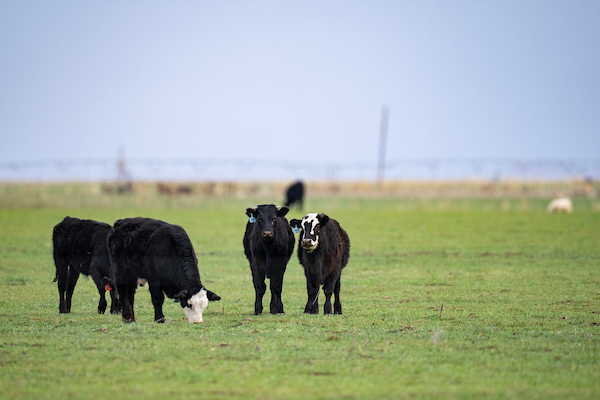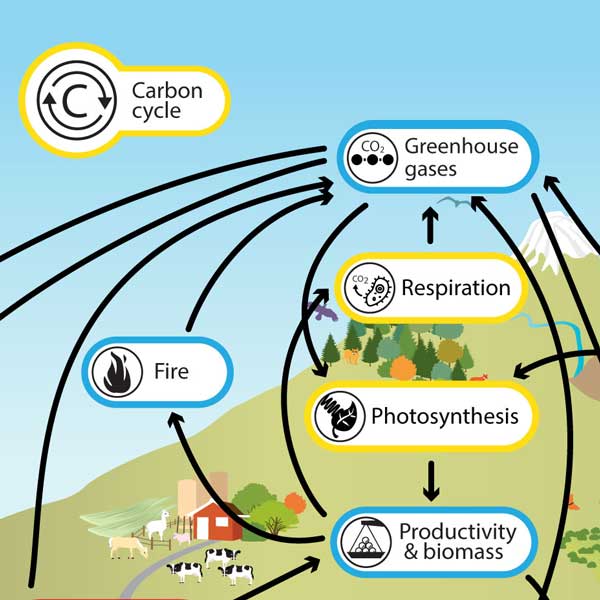Report on Hyundai Motor Company’s IONIQ Forest Initiative and its Contribution to Sustainable Development Goals
Executive Summary
- Hyundai Motor Company’s IONIQ Forest project has reached its 10th anniversary, achieving the milestone of planting 1 million trees across 13 countries.
- The initiative directly supports key United Nations Sustainable Development Goals (SDGs), particularly SDG 13 (Climate Action) and SDG 15 (Life on Land).
- An innovative, award-winning campaign, “Tree Correspondents,” utilizes Artificial Intelligence (AI) to amplify the message of forest conservation, aligning with SDG 9 (Industry, Innovation, and Infrastructure).
- The project reaffirms Hyundai’s commitment to global biodiversity, climate action, and corporate social responsibility, reflecting SDG 17 (Partnerships for the Goals).
IONIQ Forest Project Overview
Project Milestones and Global Reach
- Launch (2016): The project was initiated to commemorate the debut of the Hyundai IONIQ Electric, with the goal of planting trees to create a better world for future generations.
- Global Expansion (2021): The initiative expanded internationally with the launch of the IONIQ 5 vehicle, broadening its environmental impact.
- One Million Trees (2025): The project has successfully planted one million trees, marking a significant achievement in its decade-long history.
Participating Countries
- Brazil
- Canada
- China
- Czech Republic
- Germany
- India
- Korea
- Mexico
- Philippines
- Saudi Arabia
- Türkiye
- U.S.
- Vietnam
Alignment with Sustainable Development Goals (SDGs)
SDG 13: Climate Action
- The IONIQ Forest project directly contributes to climate action by supporting global reforestation efforts. The planting of one million trees serves as a tangible measure to combat climate change through carbon sequestration.
SDG 15: Life on Land
- The initiative is fundamentally focused on protecting, restoring, and promoting the sustainable use of terrestrial ecosystems.
- By planting trees in diverse regions, the project actively works to restore forest ecosystems and preserve local biodiversity.
SDG 9: Industry, Innovation, and Infrastructure
- The “Tree Correspondents” campaign demonstrates a novel application of technology for sustainable development.
- It leverages advanced technologies, including AI, bespoke Large Language Models (LLMs), and real-time data trackers, to create compelling narratives that foster public engagement with environmental issues.
SDG 17: Partnerships for the Goals
- The project’s implementation across 13 countries exemplifies a global partnership for sustainable development.
- Collaboration with expert organizations for external datasets strengthens the project’s capacity and impact, showcasing a multi-stakeholder approach to achieving the SDGs.
“Tree Correspondents” Campaign: An Innovative Approach to Advocacy
Campaign Mechanism
- Data Collection: Real-time ecological data is collected from trackers installed on trees in IONIQ Forests located in Brazil, the Czech Republic, and Korea.
- Data Integration: This primary data is combined with external datasets from partner organizations like The Weather Company.
- AI-Powered Narrative Generation: A bespoke LLM processes the combined data, using analysis and natural language processing to translate objective measurements into first-person narratives from the perspective of the trees.
- Content Focus: The resulting articles highlight the urgent impacts of climate change, forest loss, and ecosystem deterioration, giving a “voice” to nature.
Campaign Recognition
- The campaign has received significant international acclaim, earning two Gold Lions and one Silver Lion in the Digital Craft category at the 2025 Cannes Lions International Festival of Creativity.
- This recognition underscores the campaign’s success in integrating technology with creative storytelling to advance environmental awareness and action.
1. Which SDGs are addressed or connected to the issues highlighted in the article?
The article on Hyundai Motor’s IONIQ Forest project highlights issues and actions that are directly connected to the following Sustainable Development Goals (SDGs):
- SDG 13: Climate Action – The article explicitly mentions the project’s goal is to address the “urgency of… climate action” and contribute to “combating climate change.”
- SDG 15: Life on Land – The core of the project is focused on terrestrial ecosystems, with activities like planting trees, “global reforestation efforts,” “restoring ecosystems,” and “preserving biodiversity.”
- SDG 17: Partnerships for the Goals – The initiative is a global, private-sector-led project involving technology and collaboration across 13 countries, embodying the spirit of multi-stakeholder partnerships.
2. What specific targets under those SDGs can be identified based on the article’s content?
SDG 13: Climate Action
- Target 13.3: Improve education, awareness-raising and human and institutional capacity on climate change mitigation, adaptation, impact reduction and early warning.
- Explanation: The “Tree Correspondents” campaign is a primary example of this target. The article states the campaign “spotlights the urgent need for forest conservation and climate action by giving trees a ‘voice'” using AI-driven storytelling. This is a direct effort to raise public awareness about climate change and its impacts on forests.
SDG 15: Life on Land
- Target 15.2: By 2020, promote the implementation of sustainable management of all types of forests, halt deforestation, restore degraded forests and substantially increase afforestation and reforestation globally.
- Explanation: The article’s central theme is the IONIQ Forest project, which has amassed “1 million trees planted in 13 countries.” This is a direct contribution to global reforestation and the restoration of forests.
- Target 15.5: Take urgent and significant action to reduce the degradation of natural habitats, halt the loss of biodiversity and, by 2020, protect and prevent the extinction of threatened species.
- Explanation: The article states that the IONIQ Forest project contributes to “restoring ecosystems, and preserving biodiversity in the regions.” By planting trees and re-establishing forests, the project helps restore natural habitats and halt the loss of local biodiversity.
SDG 17: Partnerships for the Goals
- Target 17.17: Encourage and promote effective public, public-private and civil society partnerships, building on the experience and resourcing strategies of partnerships.
- Explanation: The IONIQ Forest is described as a “decade-long ecological effort” by a private company, Hyundai Motor. The project operates globally (“in 13 countries”) and leverages technology and data from “expert organizations such as The Weather Company.” This represents a significant private-sector partnership aimed at achieving sustainable development goals.
3. Are there any indicators mentioned or implied in the article that can be used to measure progress towards the identified targets?
SDG 13: Climate Action
- Indicator for Target 13.3: The existence and recognition of the “Tree Correspondents” awareness campaign.
- Explanation: The article provides concrete evidence of this campaign, noting it “gained global recognition with three wins… at the recent 2025 Cannes Lions International Festival of Creativity.” The awards and the campaign’s presence on platforms like YouTube and Threads serve as qualitative indicators of its reach and effectiveness in raising awareness.
SDG 15: Life on Land
- Indicator for Target 15.2: The number of trees planted and the geographical scope of the project.
- Explanation: The article provides a clear, quantifiable indicator by stating the project has reached “1 million trees planted in 13 countries around the world.” This directly measures progress in reforestation efforts.
- Indicator for Target 15.5: The collection of ecological data to monitor ecosystem health.
- Explanation: The article implies a monitoring mechanism by mentioning that “trackers were installed on IONIQ Forest trees… to collect real-time ecological data on the trees and their surroundings.” This data can be used to measure the project’s impact on restoring ecosystems and preserving biodiversity over time.
SDG 17: Partnerships for the Goals
- Indicator for Target 17.17: The scale and commitment of the private-sector-led initiative.
- Explanation: The article describes a “decade-long ecological effort” by Hyundai Motor, a major global corporation. The commitment of resources over ten years and the project’s expansion to 13 countries serve as an indicator of a substantial and effective private-sector partnership for sustainability.
4. Table of SDGs, Targets, and Indicators
| SDGs | Targets | Indicators |
|---|---|---|
| SDG 13: Climate Action | 13.3: Improve education, awareness-raising and human and institutional capacity on climate change mitigation. | The creation and global recognition (Cannes Lions awards) of the “Tree Correspondents” awareness campaign. |
| SDG 15: Life on Land | 15.2: Promote sustainable management of all types of forests, halt deforestation, and restore degraded forests. | The planting of “1 million trees” across “13 countries.” |
| 15.5: Take urgent action to reduce the degradation of natural habitats and halt the loss of biodiversity. | The project’s contribution to “restoring ecosystems, and preserving biodiversity,” supported by the collection of “real-time ecological data” from trackers on trees. | |
| SDG 17: Partnerships for the Goals | 17.17: Encourage and promote effective public-private and civil society partnerships. | A “decade-long ecological effort” by a private company (Hyundai Motor) operating in 13 countries and collaborating with expert organizations. |
Source: cleantechnica.com







